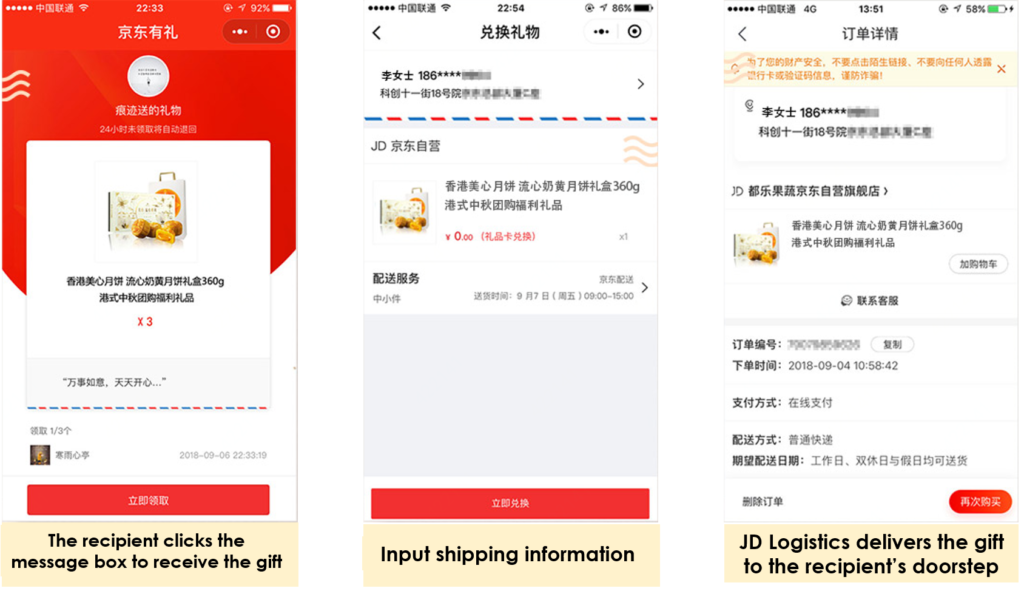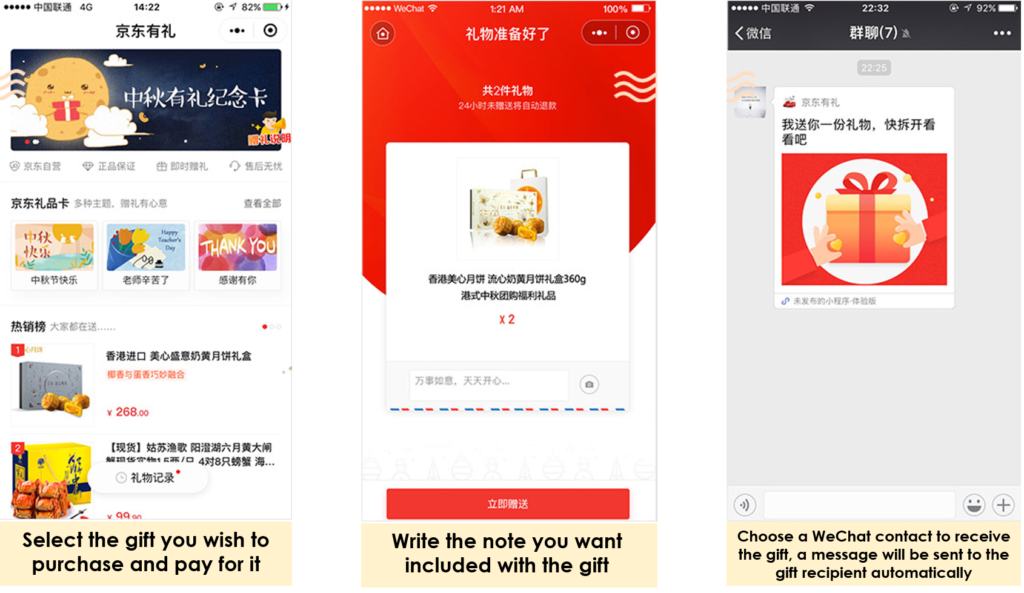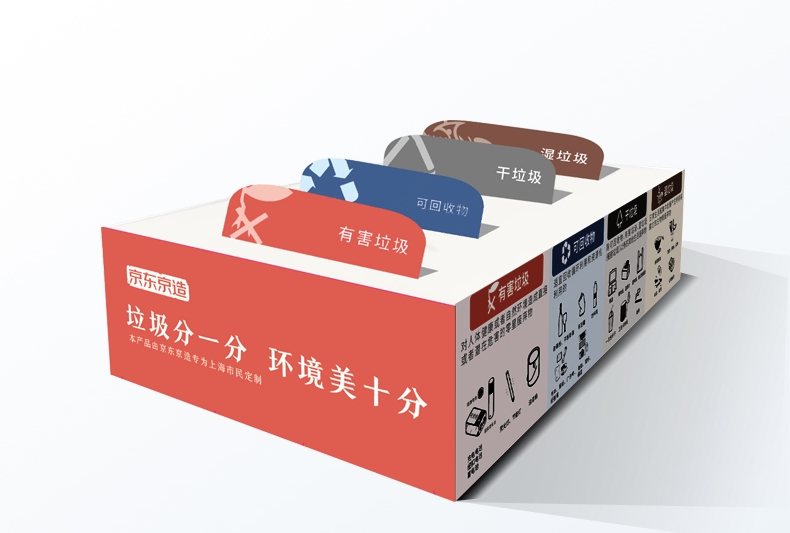By Zhenhui Wang, CEO of JD Logistics
(Note: This piece originally appeared on the World Economic Forum’s Agenda blog, here https://www.weforum.org/agenda/2019/07/industrial-iot-iiot-logistics-supply-chain/)
If our water flows freely when we open the tap, most of us don’t think much about the reservoir where it originated or the plant where it was treated. We are even less likely to think about the network of pipes the water passed through to reach our sink. Similarly, when we buy a product in a shop or pick up an online purchase delivered to our doorstep, few of us consider the complex links in the supply chain that put that product in our hands. But a truly efficient supply chain that is fully optimized at every step, from manufacturing to inventory management to fulfilment, is what gets products into people’s hands as fast as possible, and with the least amount of environmental impact.
Today, with the emergence of 5G cellular networks, we are on the brink of a revolution in supply chain and logistics.
We will see faster speeds throughout the chain, which will become more efficient, convenient and sustainable by orders of magnitude. That’s because 5G will power the Industrial Internet of Things (IIoT), enabling large-scale, real-time connectivity all the time.
When we refer to the Internet of Things, it’s usually human-to-small device connections, such as web-connected home appliances, that first come to mind. These applications are both fun and useful – and are becoming big business as well. Importantly, however, they make up part of a broader market that includes devices like autonomous delivery robots and drones, which are being used across a wide range of industries, including logistics, farming and more. In fact, the IoT market already includes an estimated 10 billion devices as of last year, with total investments projected to approach $15 trillion by 2025, according to Business Insider Intelligence.
What if all of these devices could interact with one another without human intervention? What would this type of constant connectivity look like at scale, in complex logistics operations, for example?
This is the question propelling the emerging Industrial Internet of Things (IIoT). Beyond today’s IoT, which connects robots and systems (in a warehouse, for example), implementation of Industrial IoT at scale, with less worries about connection losses, will enable reliable and dependable robot-to-robot communication, hardly requiring human intervention.
Reducing risk and optimizing efficiency
Imagine tracking a product in real-time, not just as it goes from warehouse to truck to delivery to customer, but every single moment until it reaches a customer’s hands. Imagine further that warehouse robots could communicate directly with one another, or think about autonomous trucks on the road doing that. Effective use of big data makes this possible with IIoT, and reduces costs and increase efficiency throughout the supply chain through route optimization, space optimization, more precise fuel-consumption monitoring and smart dispatching, among many other benefits.
Importantly, successful deployment of IIoT helps make traditionally risky industries safer, such as those where manual labour and robotics are intimately connected. The greatest risks of IIoT deployments are system failures or downtime. While the true impacts of a mass rollout of 5G remain to be seen, the technology’s low latency, high speed and ability to support a broad spectrum of simultaneous connections are key to ensuring safe and efficient application of IIoT.
JD Logistics, an independently run business group under JD.com, China’s largest retailer, has been an early mover on this trend. We originally built our in-house nationwide logistics network to support JD.com’s massive e-commerce infrastructure, and today we can deliver approximately 90% of orders same- or next-day. But we soon realized our network could be used to empower brands and other retailers, and even other industries. We are now taking our network to the next level. For instance, JD Logistics is partnering with top mobile providers in China to implement 5G-powered IIoT across our logistics parks.
Logistics scenarios are some of the best real-world scenarios in which to apply IIoT. At the same time, the fully connected IIoT will ultimately deliver significant benefits to the logistics industry. These benefits include real-time monitoring and scheduling of logistics vehicles, personnel, capacity optimization and monitoring of full-road rate, and more. Using IIoT, trucks can monitor their own capacity and communicate with each other to understand this information in real-time, helping to optimize overall transportation and scheduling efficiency. For example, five semi-trucks heading for the same direction can become just two or three, resulting in more efficient use of resources, and importantly, reduced carbon emissions from having fewer trucks on the road, significantly helping to reduce the overall impact of logistics on the environment. This is just one example of what IIoT holds for the future of smart supply chain.
A truly open platform
We have long believed that the full potential and widespread benefits of smart supply chain can only be realized when the whole ecosystem benefits. This will require open yet secure data-sharing among trusted collaborators. Merchants must be able to monitor in real-time and optimize the transportation of raw material and cargo, as well as storage, sorting, transfer and delivery, through full and 100%-reliable connectivity upstream and downstream. It is not limited just to basic services and software systems (such as warehouse management systems), but should also extend to predictive models and analytical tools. And such an ecosystem should not be limited to one or a few contributors. Partners should be able to contribute their own solutions, and make them available on a truly open platform. This is the only way that the industry can move forward, and is the essence of what we are trying to popularize by example.
IIoT supply chain has huge implications for improving the efficiency of companies across multiple industries beyond logistics. Over the past few years we have seen car manufacturers applying cloud-based services and IoT technology in both the procurement of overseas components and the shipping of vehicles to vendors in foreign markets. The data provided by IoT supply chain systems has also been of great use to public transport authorities, enabling them to optimize performance by monitoring their fleets, improve congestion issues and react quicker to accidents.
But the impact of IIoT goes far beyond supply chain. It will be the core of what makes smart city solutions possible, supporting sophisticated urban logistics hubs, driven by big data and cloud computing. It should also improve safety and working conditions. In China, as elsewhere, urbanization is causing intense changes to the environment, creating pollution and disruption to society. Freight vehicles produce an outsized contribution to urban traffic emission, and can take up as much as a third of road capacity. Smarter logistics operations, including underground systems that use subterranean tracks and integrated municipal pipe corridors, can help preserve open, convenient and aesthetically pleasing above-ground space that would otherwise be occupied by traditional logistics systems, ensuring smooth and efficient urban logistics with minimal disruption to daily life. With increased worker safety, more environmental protection and truly open connectivity, the application of this technology will change not only how we see logistics and supply chain, but also daily life.
This is the promise that smarter supply chains hold for our future. It’s an exciting future powered by the coming 5G wave and more open collaboration across enterprises and organizations.
 JD Gift is particularly appealing to China’s younger generations. According to Statista, in 2018, there were around 673.5 million social media users in China. Around 30% of mobile internet time is spent on WeChat, and peak WeChat usage is by the 26-35 age group. As the vast majority of Chinese youth now socialize a great deal online, some often find it awkward to give gifts in person and enjoy the comfort of being able to do so virtually rather than face-to-face. According to a JD survey, 34% of users cited avoiding the awkwardness of either giving the gift in person and 28% of users cited the risk of the receiver rejecting the gift as reasons to send e-gift cards instead of physical gifts. Furthermore, they also appreciate the ability to immediately send a gift should a special occasion, such as a friend’s birthday, inadvertently slip their mind.
JD Gift is particularly appealing to China’s younger generations. According to Statista, in 2018, there were around 673.5 million social media users in China. Around 30% of mobile internet time is spent on WeChat, and peak WeChat usage is by the 26-35 age group. As the vast majority of Chinese youth now socialize a great deal online, some often find it awkward to give gifts in person and enjoy the comfort of being able to do so virtually rather than face-to-face. According to a JD survey, 34% of users cited avoiding the awkwardness of either giving the gift in person and 28% of users cited the risk of the receiver rejecting the gift as reasons to send e-gift cards instead of physical gifts. Furthermore, they also appreciate the ability to immediately send a gift should a special occasion, such as a friend’s birthday, inadvertently slip their mind. JD has been selling gift cards through its mini-program for several years, but only started quietly testing the option to purchase physical gifts in the last year. This is particularly timely given that Qixi Festival (also known as Double Seventh Festival), which is considered China’s “Valentine’s Day” falls on August 7th. Qixi festival celebrates the Chinese folk tale, “The Cowherd and the Weaver Girl”. As the story goes (and there are many versions of it), a cowherd and a weaver girl fell in love, but because their love was not allowed, they were banished to opposite sides of the heavenly river. Once a year, on the 7th day of the 7th lunar month, a flock of magpies would form a bridge to reunite the lovers for one day. This is what is celebrated during Qixi, and today there is a gift giving expectation for young couples around the celebration each year.
JD has been selling gift cards through its mini-program for several years, but only started quietly testing the option to purchase physical gifts in the last year. This is particularly timely given that Qixi Festival (also known as Double Seventh Festival), which is considered China’s “Valentine’s Day” falls on August 7th. Qixi festival celebrates the Chinese folk tale, “The Cowherd and the Weaver Girl”. As the story goes (and there are many versions of it), a cowherd and a weaver girl fell in love, but because their love was not allowed, they were banished to opposite sides of the heavenly river. Once a year, on the 7th day of the 7th lunar month, a flock of magpies would form a bridge to reunite the lovers for one day. This is what is celebrated during Qixi, and today there is a gift giving expectation for young couples around the celebration each year.











